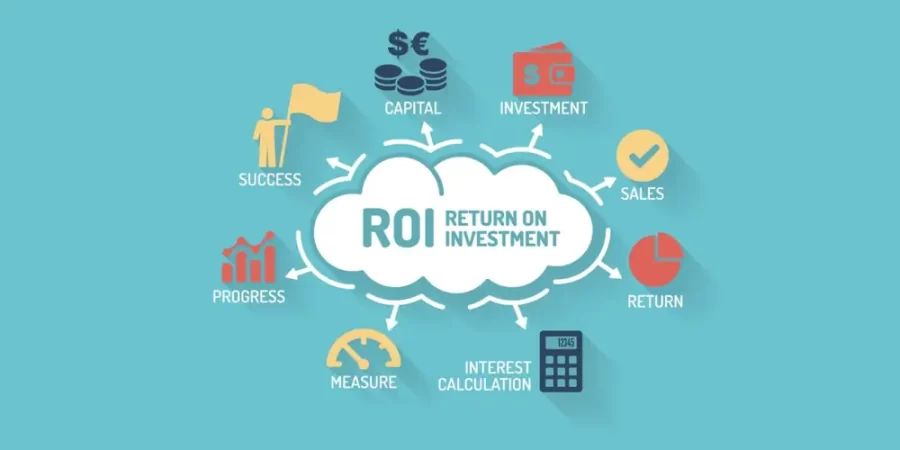Beginners Guide: How To Improve And Measuring The ROI From Online Marketing?
Online marketing has become an essential component of any business’s overall marketing strategy. With so many potential customers spending more and more time online, it’s crucial that businesses are able to reach them where they are. However, simply having a presence online is not enough. Businesses need to be able to measure the ROI of their online marketing efforts in order to know whether or not they are effectively reaching their target audience and driving sales. In this article, we will explore some strategies for improving and measuring the ROI of online marketing.
One of the most important things that businesses can do to improve the ROI of their online marketing efforts is to clearly define their target audience. This means identifying the demographics, psychographics, and behaviors of the people who are most likely to purchase their products or services. Once a business knows who their target audience is, they can create a marketing strategy that is tailored to that audience. This will increase the chances that their marketing efforts will be successful and lead to a higher ROI.
Another key strategy for improving the ROI of online marketing is to use multiple channels to reach potential customers. While it’s important to have a strong presence on social media, businesses should also consider using email marketing, search engine optimization (SEO), and pay-per-click (PPC) advertising to reach their target audience. By using a variety of channels, businesses can reach potential customers in different ways and increase their chances of making a sale.
Once a business has a clear target audience and is using multiple channels to reach them, it’s important to track and measure the ROI of their online marketing efforts. One way to do this is to use analytics tools such as Google Analytics. These tools can provide valuable insights into website traffic, bounce rates, and conversion rates, which can help businesses understand the effectiveness of their marketing efforts.
Another way to measure the ROI of online marketing is through A/B testing. This involves creating two versions of a marketing campaign and comparing the results of each. By comparing the results of these two campaigns, businesses can identify which elements of the campaign are driving the most conversions and make adjustments accordingly.
In addition to using analytics and A/B testing, businesses can also measure the ROI of their online marketing efforts by setting specific goals and tracking progress towards those goals. This might include goals such as increasing website traffic, growing social media followers, or increasing sales. By setting specific goals, businesses can track their progress and make adjustments to their marketing strategy as needed.
Another important aspect of improving the ROI of online marketing is to regularly review and update your marketing strategy. With the ever-changing landscape of digital marketing, it’s important to stay up to date with the latest trends and tools to ensure that your marketing efforts are effective. For example, if you notice that your website traffic is decreasing, it may be time to update your website’s design or content. Or if you’re not seeing the results you want from your social media campaigns, it may be time to experiment with new types of content or to use social media advertising.
Another important aspect of online marketing is to have a solid lead generation strategy in place. A lead is a potential customer who has shown interest in your business by providing their contact information in exchange for an offer or content. A lead generation strategy is a set of tactics and tactics that you use to attract potential customers and convert them into leads. For example, you can use a landing page, an ebook, a webinar, or a quiz to generate leads. Having a solid lead generation strategy in place can help you to increase your ROI by converting more leads into sales.
One of the most important things to remember when it comes to measuring the ROI of online marketing is to track your metrics over time. This will allow you to see trends and patterns in your marketing efforts, which will help you to identify what’s working well and what’s not. For example, if you notice that your website traffic is increasing but your conversion rate is staying the same, you may need to focus on optimizing your website for conversions.
Another way to measure the ROI of online marketing is to use cost-per-acquisition (CPA) analysis. This involves calculating the cost of acquiring a customer, including all of the expenses associated with your marketing efforts. By comparing this cost to the revenue generated from the customer, you can determine the ROI of your marketing efforts. This can help you to identify which marketing channels are the most cost-effective and where to focus your efforts in the future.
It is important to have a well-defined customer journey in place. A customer journey is the series of steps a customer goes through from the initial awareness of your business to the final purchase. By understanding your customer journey, you can optimize your marketing efforts to align with the customer’s decision-making process and increase the chances of conversion.
Improving and measuring the ROI of online marketing is a continuous process that requires a clear understanding of your target audience, regular review and updates of your marketing strategy, a solid lead generation strategy, a well-defined customer journey, and tracking your metrics over time. By following these best practices, businesses can improve the ROI of their online marketing efforts and achieve their desired business goals.
Here are some bullet points to help you learn how to improve and measuring the ROI from online marketing for success:
- Clearly define your target audience: Identify the demographics, psychographics, and behaviors of the people who are most likely to purchase your products or services. Tailoring your marketing strategy to your target audience will increase the chances of success and a higher ROI.
- Use multiple channels to reach potential customers: Social media is important, but businesses should also consider using email marketing, SEO, and PPC advertising to reach their target audience in different ways and increase the chances of making a sale.
- Track and measure the ROI of your online marketing efforts: Use analytics tools such as Google Analytics to gain insight into website traffic, bounce rates, and conversion rates. A/B testing can also be used to identify which elements of a marketing campaign are driving the most conversions.
- Set specific goals and track progress: Set goals such as increasing website traffic, growing social media followers, or increasing sales and track progress towards those goals. This will help you understand the effectiveness of your marketing efforts.
- Conduct customer surveys: Ask customers about their experience with your business to gain valuable insights into what is working well and what needs improvement.
- Review and update your marketing strategy regularly: Stay up to date with the latest trends and tools to ensure that your marketing efforts are effective. Regularly review and update your strategy as needed.
- Have a solid lead generation strategy in place: A lead generation strategy is a set of tactics that you use to attract potential customers and convert them into leads. Having a solid lead generation strategy in place can help increase your ROI.
- Track your metrics over time: This will allow you to see trends and patterns in your marketing efforts and identify what is working well and what is not.
- Use cost-per-acquisition (CPA) analysis: Calculate the cost of acquiring a customer, including all of the expenses associated with your marketing efforts. Compare this cost to the revenue generated from the customer to determine the ROI of your marketing efforts.
- Have a well-defined customer journey in place: A customer journey is the series of steps a customer goes through from the initial awareness of your business to the final purchase. By understanding your customer journey, you can optimize your marketing efforts to align with the customer’s decision-making process and increase the chances of conversion.
In conclusion, online marketing plays a crucial role in any business’s overall marketing strategy. To be successful in today’s digital landscape, businesses need to not only have a presence online but also measure the ROI of their online marketing efforts. By implementing the strategies discussed in this article, such as clearly defining your target audience, using multiple channels to reach potential customers, and tracking and measuring the effectiveness of your marketing efforts, businesses can ensure that they are reaching their target audience and driving sales.
Additionally, by setting goals, conducting A/B testing and customer surveys, regularly reviewing and updating your marketing strategy, having a solid lead generation strategy, tracking your metrics over time, using cost-per-acquisition analysis, and having a well-defined customer journey, businesses can gain valuable insights and make necessary adjustments to improve their ROI. Remember, online marketing is a continuous process, and to get the best results, businesses need to be consistent, patient, and willing to adapt as the digital landscape evolves.





Leave a Reply